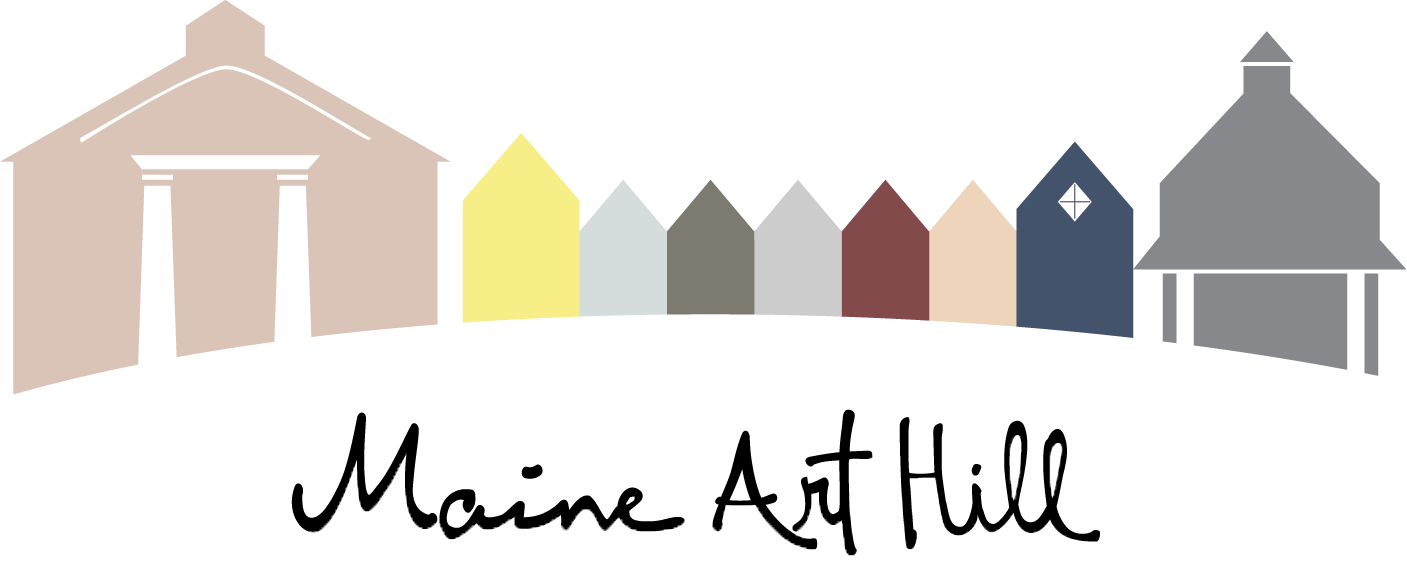Adrienne Kernan LaVallee joined Maine Art Hill in the fall of 2022. Her success was immediate. Her colorful and interesting landscapes capture attention and invite viewers to lean in and wonder at not only the process but also the story.
LaVallee was born and raised in the beautiful, bucolic Berkshire Hills of Massachusetts in Lenox. “As a child, I knew I was a painter,” shares LaVallee. “Both my grandparents and my father made art in their spare time, so there was never a question in my mind.”
In a way, she was lucky in that Lenox had a good art program, and by high school, she had the support of an excellent teacher. Her parents continued to cheer her on, as well. While LaVallee says she has always been an artist, she did what many do. She juggled jobs at first, but luckily, her educational path allowed her to teach at the college level, and this supported her and her art.
“During my twenty-plus years teaching for Saint Anselm College in Manchester, NH, I received support from colleagues and the administration,” explains LaVallee. “Several times, this support was monetary; my colleagues were among the first to purchase my landscape paintings.”
Maine was her home away from home. It became her dream home twenty-five years ago when she met her husband. "He had a summer place on Baunebeg Lake in North Berwick and soon bought a house in Wells," she says. "In 2011, we purchased our current home in a neighborhood with a right of way to Biddeford Pool."
Artists develop an aesthetic “intuition” from years of practice. While some may feel their art just happens, LaVallee's work combines a lifetime of ideas, practice, and skill.
"I have always worked in series, and the subjects of these series have varied over the years from symbolic to non-objective abstraction to realist landscapes and now abstracted landscapes," says LaVallee. "I allow my inner aesthetic nature to take its course, which is primary to my growth as an artist."
LaVallee also uses photography to capture moments and hold them for later inspiration.
"My process includes going out to find and photograph scenes that will make a sound basis for a painting," she explains. "Then, I spend hours combing through new and old photos and making sketches."
"Sketching it out in elemental composition is next. I expect change as I paint. The finished piece is indebted to the process of adding and subtracting paint," she says. "Sometimes, I scrape to remove an area of the composition that isn’t working; other times, I wipe or scrape off paint for the mark-making. I use brushes, palette knives, gloved hands, rags, or anything I can think of to make my marks. I want the surface of my paintings to be visually tactile."
Some paintings can take three to five days to complete and some up to a year of on-and-off painting.
"I work on multiple paintings, never just one at a time. I use even use big house painting brushes and palette knives the size of spatulas," LaVallee laughs."
Her process evolved over the years yet she finds herself sometimes repeating methods that she used thirty years ago in non-objective abstract paintings.
"I think what had changed most is how natural it all feels to me, how comfortable I am."
Save the Date for LaVallee's 2025 Summer Show
Artist Reception Saturday, June 14, 5-7 PM
